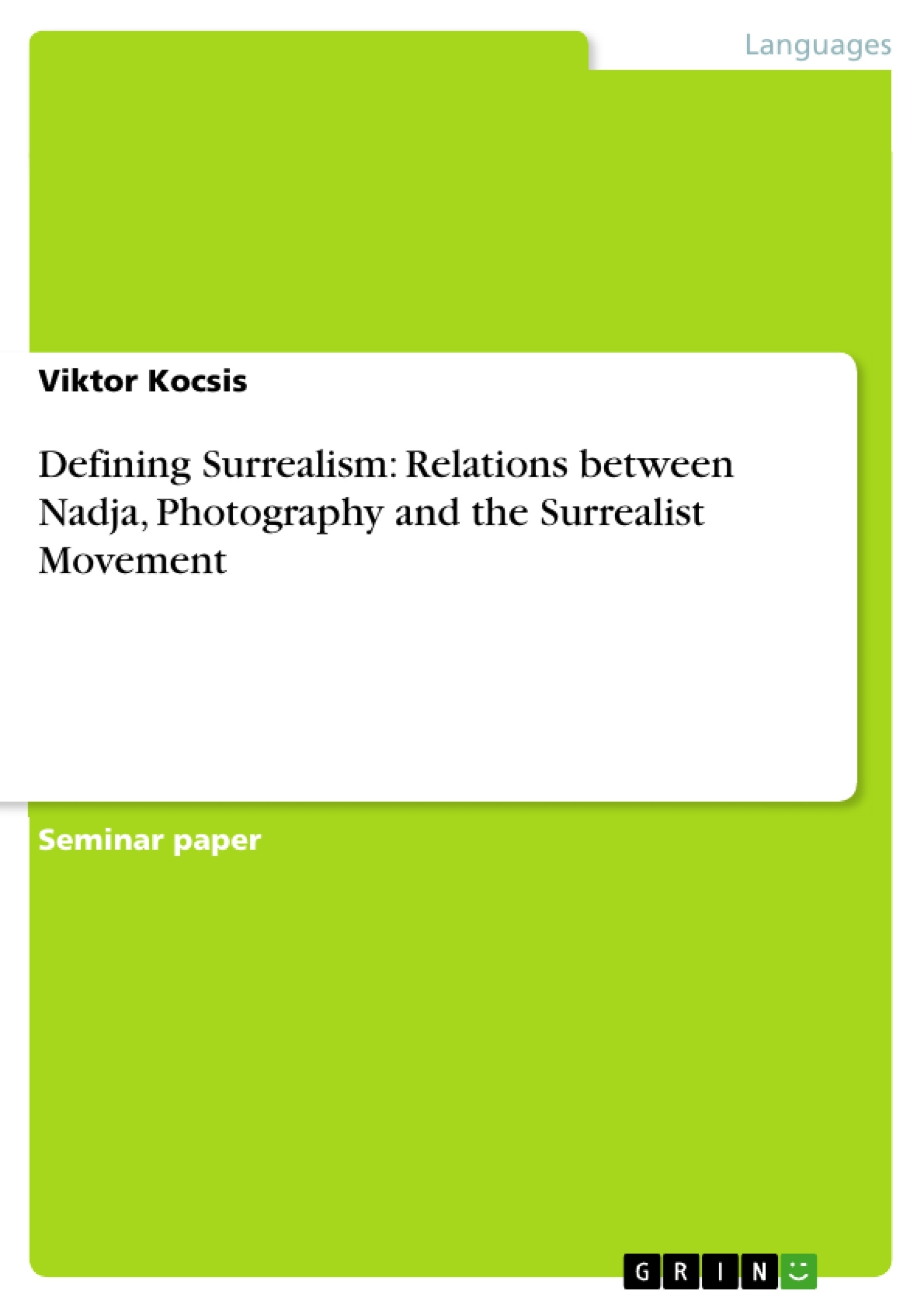“Surrealism especially has entered our everyday language; we talk of ‘surreal humour’ or a ‘surreal plot’ to a film. This very continuity means that it is difficult to place them at one remove from us in ‘history’.” (HOPKINS 2004: Introduction)
Defining Surrealism has become, as HOPKINS’s statement illustrates, a very challenging task due to its wide prevalence in contemporary speech and language, which makes it difficult to isolate Surrealism historically and to distinguish between its intended meanings within certain historical epochs. As the following section will outline, Surrealism has been continuously influenced and shaped from generation to generation and has therefore been marked by different characteristics throughout history. The long historical chronology (cf. ASPLEY 2010: XV) of the surreal has indeed caused a lot of confusion with regard to the usage of the term, which should always be contextualized within the respective examined epoch in order to “grasp” its intended “spirit”.
This research paper aims at examining and defining the early twentieth century Surrealist Movement more closely, which has been described in the Manifeste du surréalisme in 1924 by ANDRÉ BRETON, who seems to be widely acknowledged as the father of Surrealism. After a brief theoretical section outlining a short historical chronology of Surrealism and commenting on BRETON’s influence on the Surrealist Movement in 20th Century France, chapter 3 will present an analysis of Nadja (1928), one of BRETON’s most important surrealist novels forming the “climax of the literary movement of Surrealism in France” (REENTS 2009: 31). The analysis will be carried out from a predominantly photographic angle to examine how photography relates to the concept of the surreal and how it helps define Surrealism in BRETON’s time.
Inhaltsverzeichnis (Table of Contents)
- Introduction
- A Definition of Surrealism and Breton’s influence on the Surrealist Movement
- The relations between Nadja, Photography and Surrealism
- Breton’s photos
- Nadja’s drawings
- Categorizing Nadja: Literary Genre and the evidentiary value of photography
- Conclusion
Zielsetzung und Themenschwerpunkte (Objectives and Key Themes)
This research paper aims to examine and define the early twentieth century Surrealist Movement more closely, particularly as it was described in André Breton's 1924 Manifeste du surréalisme. This paper will explore the influence of Breton's photography and Nadja's drawings on our understanding of Surrealism.
- The historical development of Surrealism
- Breton's influence on the Surrealist Movement
- The relationship between photography, Surrealism and the concept of the "surreal"
- The function of drawings and photography in Nadja
- The genre of Nadja
Zusammenfassung der Kapitel (Chapter Summaries)
The first chapter will provide a brief historical background of Surrealism, outlining its various definitions over time. It will examine the influence of André Breton on the movement, particularly his first definition of Surrealism in 1924 and his later adjustments to the definition in 1930.
The second chapter will delve into Breton's surrealist novel Nadja, focusing on how photography and Nadja's drawings contribute to the surrealist effect of the text. The chapter will examine the photographic signifying functions as outlined by Bate, including mimesis, prophotographic, and enigmatic, and how these relate to the visual content of the novel.
Chapter 4 will explore the question of genre in Nadja, particularly in light of the reliability of Breton's photos and Nadja's drawings as documentary evidence. It will analyze how the use of photography and drawings contributes to the fictional qualities of the text.
Schlüsselwörter (Keywords)
The keywords and focus topics of this paper are: Surrealism, André Breton, Nadja, photography, drawings, artistic expression, psychic automatism, documentary value, autofiction, Manifeste du surréalisme, Nadja.
- Quote paper
- Viktor Kocsis (Author), 2013, Defining Surrealism: Relations between Nadja, Photography and the Surrealist Movement, Munich, GRIN Verlag, https://www.grin.com/document/230309



